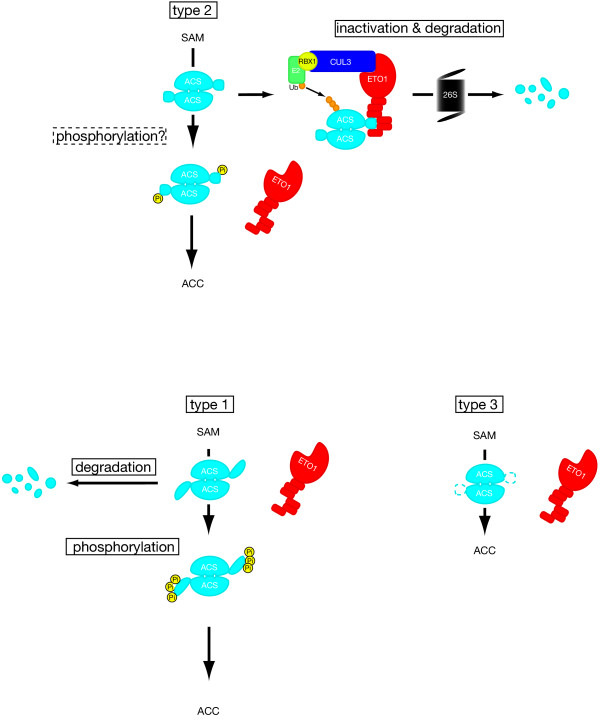Figure 6.

Model for type-2-specific regulation of ACC synthases by ETO1. ACC synthases and ETO1 proteins are shown in light blue and red, respectively. C-terminus of ACS is drawn as a small light blue circle or oval. Note that each pair of ACC synthases forms a dimer with shared active site (two pockets per dimer). Upper panel:, type 2 ACS dimer interacts with ETO1. As a result, the ACS is inhibited for enzymatic activity and targeted for proteasome-dependent degradation. Yet unknown modification (possibly phosphorylation (yellow circles)) of the C-termini of type 2 ACS may inhibit interaction between ACS and ETO1, resulting in ACC production. Lower panel (left) type 1: Although ETO1 does not interact with type 1 ACS dimer because type 1 ACS has a C-terminal tail (blue oval) not suitable for the interaction with ETO1, it is also degraded with yet unidentified mechanism. Triple phosphorylation of the C-termini by MAPK stabilizes type 1 ACS dimer and the dimer produces ACC from SAM. Lower panel (right), type 3: ETO1 does not interact with type 3 ACS dimer because it lacks the specific C-terminal tail required for the interaction with ETO1.
